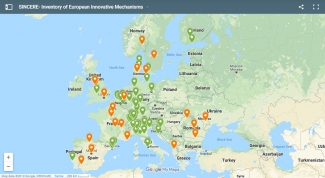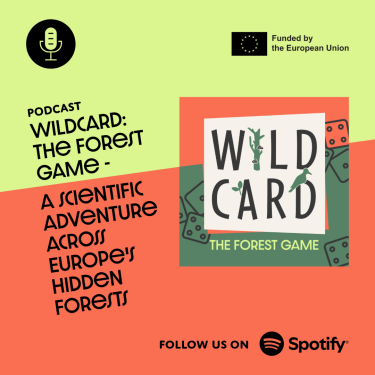Mapping forest innovation across Europe

A map of innovative ways in which forests are being employed and managed to provide benefits to people has been launched by the Spurring INnovations for forest eCosystem sERvices in Europe (SINCERE) project.
The map is based on an Inventory of Innovative Mechanisms (IM) produced by partners in the project, which highlights good practices at a European scale that could be replicable elsewhere. Innovative Mechanisms are novel policies, business models and other projects or initiatives to support forest management that provides benefits to people, known as forest ecosystem services (FES). Openly available on the SINCERE website, the map allows the user to view a multiplicity of cases obtained by consulting publicly available information which is subsequently integrated and confirmed by experts (validated) in many cases.
The Inventory of Innovative Mechanisms has been established to provide information for landowners and managers who are increasingly encouraged to manage their forests to deliver FES. It gathers information on mechanisms to support the provision of FES, which include, amongst other measures, Payments for Ecosystem Services (PES). The other economic instruments used by the IMs and their distribution are shown in Figure 1.
The inventory looks specifically at cases meeting three main criteria: 1) that they are connected to forests or trees; 2) that they are located in Europe; and 3) that they are innovative. The definition of innovation is intentionally as inclusive as possible. For the purpose of the inventory, innovation means a new or significantly improved good or service, process, marketing method, organisational method, or communication, cooperation and networking practice. The focus is on opportunities represented by IMs for forest owners and managers.
Research for the database was led by scientists from the TESAF Department of the University of Padova, Italy, with partners from the SINCERE consortium contributing information, particularly from their own countries, based on sources available in local languages. As a result, the possible wealth of cases described in local languages in countries not covered by the research team remains unexplored, meaning that the inventory is not exhaustive. The work is an ongoing process however, and information on additional cases not yet included is greatly welcome.
Mindful of the limitations of the inventory already described, especially the bias in terms of country coverage, some observations of the most frequent characteristics of innovation mechanisms can nevertheless be drawn.
Most frequently IMs are managed either by private or public bodies, while NGOs and semi-public bodies, such as citizens, communities, associations, foundations and other collective initiatives, are still underrepresented as mechanism administrators. IMs are more often local and are mainly located in rural areas, which is expected, given the focus on forest ecosystems. Most of the IMs have been implemented since 2000 and a large majority are designed with a duration of 10 years or more, a positive aspect that possibly connects to a long-term delivery of FES.
Following the consolidated definition of ecosystem services, the inventory looks at goods and services provided by forests grouped into three types: i) provisioning, which include material and energetic forest outputs; ii) regulation and maintenance, which include the ways in which forests mediate or moderate the environment; and iii) cultural, which include the non-material outputs of forest ecosystems. In the inventory, regulation services are the most represented with 100 cases, followed by 76 cases addressing cultural services and 39 cases of provisioning services (Figures 2, 3 and 4).
Interestingly, IMs do not focus solely on forests, as several of them also extend their effects to other ecosystems and land uses, such as agricultural land or wetlands.
The spectrum of services targeted by the IMs is wide and diversified, but some FES are more represented than others in the inventory. Timber, water provision and non-wood forest products are the most frequently targeted provisioning services; climate regulation and lifecycle maintenance-habitat protection are the most frequently targeted regulation services and aesthetic, educational and recreational services are the most frequently targeted cultural services.
These initial considerations, coming from a simple and descriptive data analysis, will be further analysed by the SINCERE project through more in-depth statistical analysis techniques to highlight, for example, FES provision patterns and actors’ profiles.
This inventory represents a starting point for future research within SINCERE and is open to further updates, through adding new cases, fine-tuning their description and monitoring the evolution and the development of the existing cases and the innovation features they might introduce in the future.
SINCERE is a 4-year project funded through the European Union’s Horizon 2020 research and innovation programme, coordinated by the European Forest Institute.




